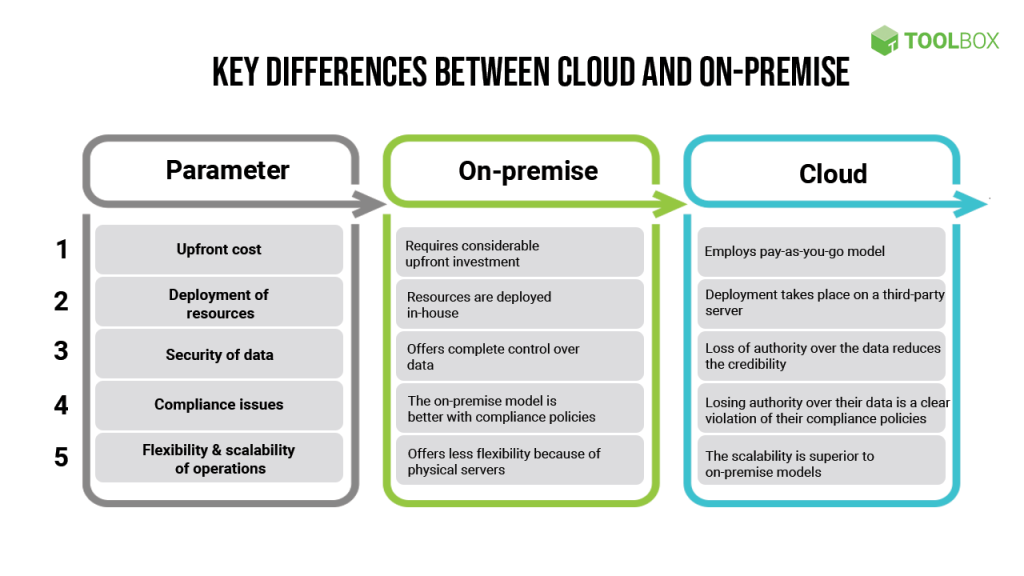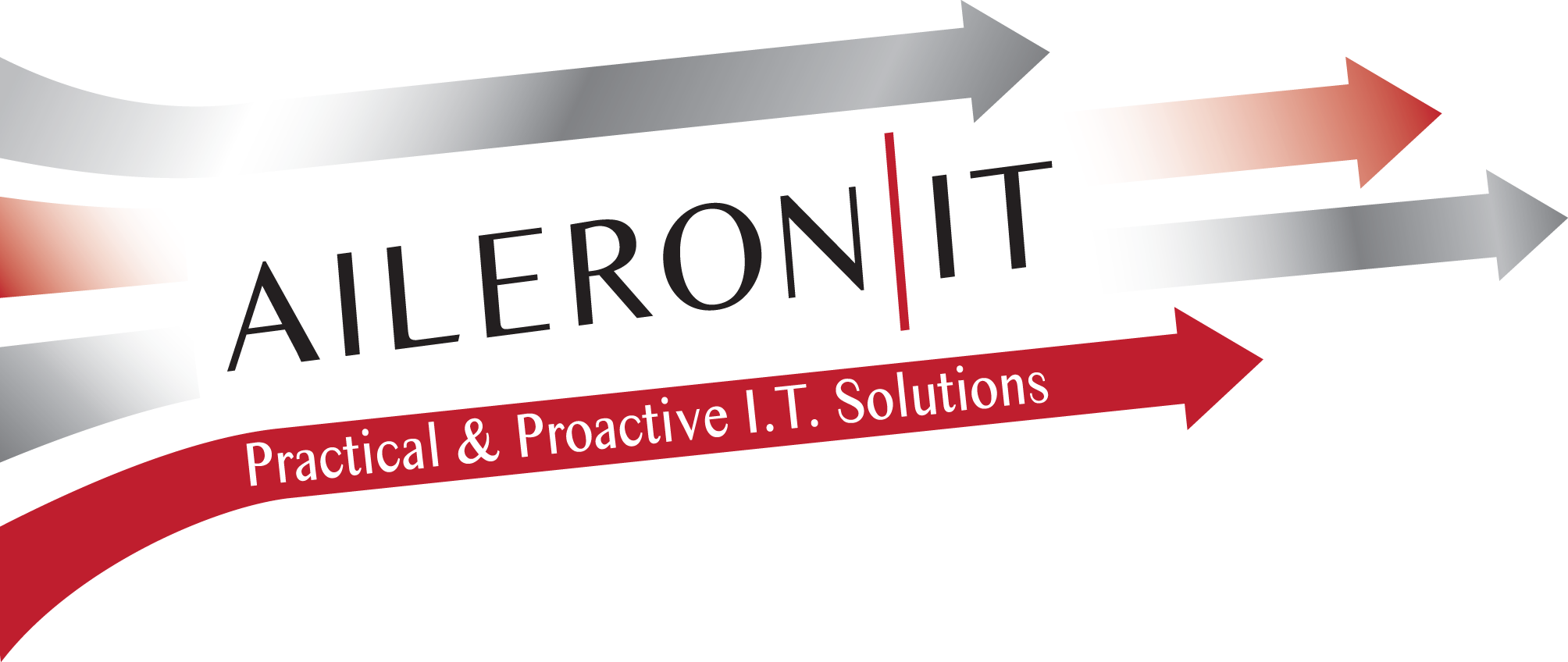What’s the difference between on-premises and cloud-based solutions?

Businesses are increasingly choosing between on-premises and cloud-based solutions for their IT infrastructure. Each option offers unique benefits and potential drawbacks, depending on your business’s needs, budget, and industry regulations.
1. Key Differences in Deployment
On-premises solutions require local servers and infrastructure, with dedicated physical space and personnel to manage and maintain it. Cloud solutions, however, are hosted by a third party and accessed online, removing the need for on-site hardware.
Considerations
- On-Premises: Full control over data and servers.
- Cloud: Access anytime, anywhere, with scalable resources.
2. Cost Structure
Costs vary significantly between the two. On-premises options often involve significant upfront costs for hardware, installation, and maintenance. Cloud-based services generally use a subscription model, reducing initial costs and allowing for predictable budgeting.
Cost Breakdown
- On-Premises: Higher initial capital expenditure (CapEx) but may reduce over time.
- Cloud: Lower initial costs, ongoing operational expenses (OpEx), and scalability without large investments.
3. Maintenance and Management
On-premises systems require in-house IT staff or dedicated resources to manage updates, backups, and troubleshooting. Cloud providers handle most maintenance tasks, which frees your team from daily IT concerns but can sometimes reduce direct control over configurations.
Management Insight
- On-Premises: Direct oversight of maintenance and data security.
- Cloud: Provider manages updates and security but may come with fewer customization options.
4. Security and Compliance
Compliance and data security requirements vary by industry, and some organizations may need the tight control that on-premises solutions offer. Cloud providers, however, invest heavily in security infrastructure and offer compliance certifications, which can be advantageous for smaller businesses.
Security Comparisons
- On-Premises: Complete control but requires in-house expertise for optimal security.
- Cloud: High security, often with dedicated teams, although some industries may require additional considerations.
5. Scalability and Flexibility
Cloud solutions offer seamless scalability, letting you adjust resources to meet changing needs. On-premises systems can be more difficult and costly to scale due to hardware and physical space limitations.
Scalability Factors
- On-Premises: Scalable, but hardware costs and physical limitations can impede quick changes.
- Cloud: Nearly unlimited scalability with resources available on demand.
Conclusion
Choosing between on-premises and cloud-based solutions depends on your organization’s specific needs. While on-premises can provide robust control and security for industries with stringent compliance, cloud solutions offer flexibility, ease of management, and scalability ideal for many modern business needs.

